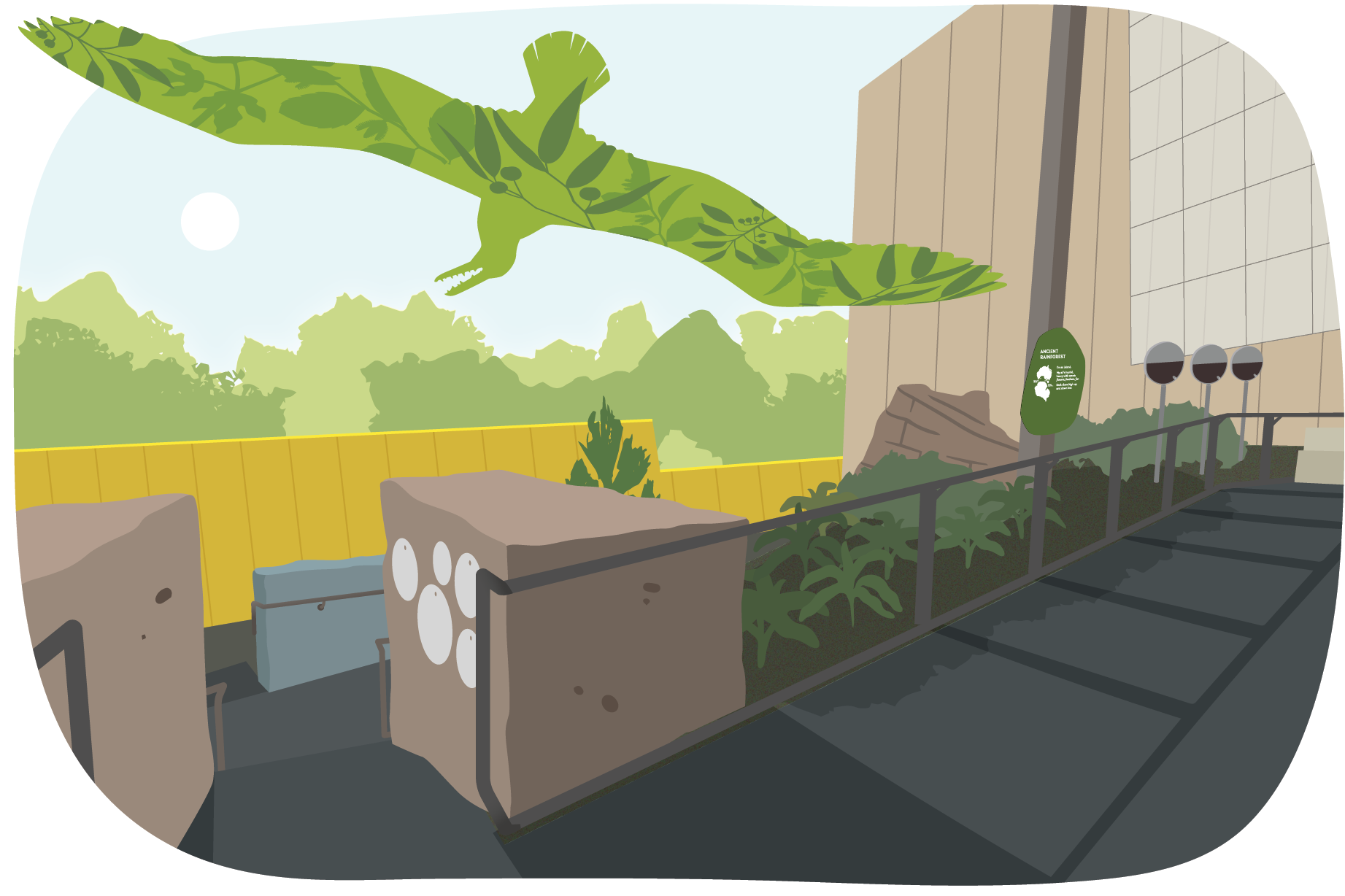Pelagornis
Fossilised leaves
These fossils were found in brown coal mines in Anglesea. Coal forms when plant material is buried and put under pressure. But brown coal seams were not buried deeply enough to turn into black coal. Instead, leaves, fruits and branches were preserved including Australia's earliest fossil evidence of the banksia.
Where can you see this today?
Bracken | Moo-laa
Many of the plants in our garden have different names in First People's languages. This bracken fern is known as Moo-laa in the Tjapwurong language spoken in western Victoria but it is also known as Gurgi | Eora, Makkitch | Gunditjmara, and Geewan | GunaiKurnai.
















